Exploring the World of Mexican Mole: A Guide to Traditional Dishes
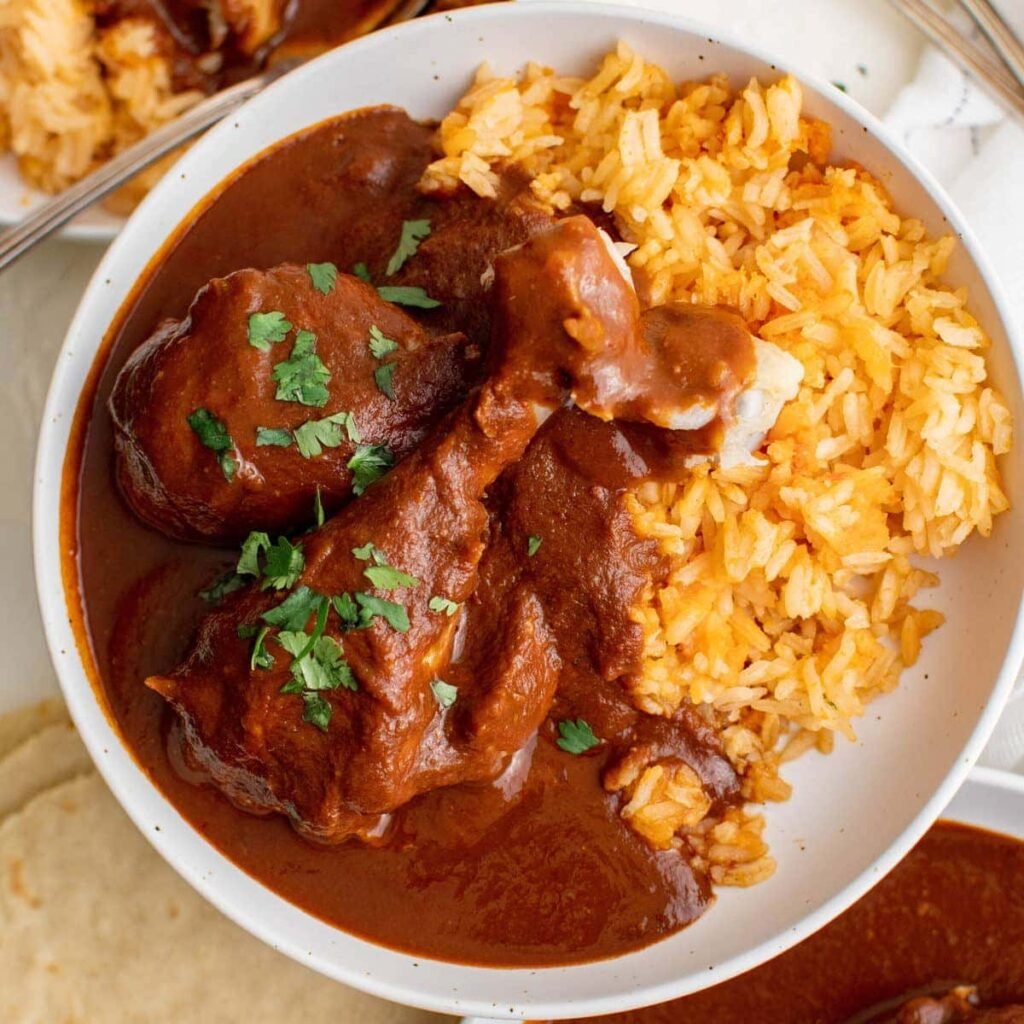
Mexican mole is a traditional and flavorful sauce that is often used in Mexican cuisine. It’s a complex and rich sauce that is made from a variety of ingredients, including spices, herbs, and chiles. Mole is a popular and versatile sauce that can be used in a variety of dishes, including chicken, pork, beef, and even vegetarian options. In this post, we’ll take a closer look at mole, its history, and how to make this delicious sauce at home. History of Mole: The origin of mole is not entirely clear, but it’s believed to have originated in pre-Hispanic Mexico. The Aztecs and Mayans used chiles and cocoa in their cooking, and it’s possible that mole sauce has its roots in these ancient cultures. Over time, mole sauce evolved and became more complex, with additional ingredients like nuts, seeds, and fruits being added to the recipe. Today, mole is a beloved sauce in Mexican cuisine and is often served at special occasions and celebrations. Recipe for Mexican Mole Mole is a complex sauce made with a variety of ingredients, including chilies, spices, nuts, and often chocolate. Here is a basic recipe for mole: Mole Ingredients: Mole Instructions: Cooking Time for Mexican Mole Mexican mole is a time-consuming dish to prepare. The cooking time for this recipe is about 1 hour and 15 minutes, including preparation time. Conclusion Mole is a flavorful and complex sauce that is a staple in Mexican cuisine. Its unique combination of spices, chilies, and chocolate gives it a rich, earthy flavor that pairs well with a variety of dishes. While it can be time-consuming to prepare, the end result is well worth the effort. Whether you’re using it as a sauce for chicken, enchiladas, or tamales, mole is sure to add a delicious and unique flavor to your meals. More Latin American Recipes More Mexican Recipes Follow Us on Instagram
Mexican Chiles Rellenos: A Guide to the Classic Stuffed Peppers

Mexican cuisine is known for its bold and complex flavors, and one dish that perfectly embodies these qualities is chiles rellenos. This traditional dish features large, mild peppers that are stuffed with a savory filling, then coated in a light batter and fried to crispy perfection. Whether you’re a fan of spicy foods or prefer milder flavors, chiles rellenos are sure to satisfy your taste buds. In this post, we’ll explore the origins of this classic dish and provide step-by-step instructions for making it at home. Chiles Rellenos History and Origin Chiles rellenos have a long and rich history in Mexican cuisine. The dish is believed to have originated in the city of Puebla, in central Mexico, during the colonial period. The Spanish introduced peppers to the indigenous people of Mexico, who then adapted them to their own culinary traditions. Chiles rellenos quickly became a popular dish, with many variations and regional styles developing over time. Today, chiles rellenos remain a staple of Mexican cuisine, and are enjoyed in many different forms throughout the country. While the basic recipe remains the same, there are countless variations on the filling and sauce used to make this delicious dish. Recipe for Chiles Rellenos Chiles Rellenos Ingredients: Chiles Rellenos Cooking time: Preparation time: 30 minutes Cooking time: 30 minutes Total time: 1 hour Chiles Rellenos Instructions: Chiles Rellenos Tips and Variations Chiles rellenos can be customized to your liking by using different fillings and sauces. Here are a few ideas to get you started: Chiles Rellenos Cooking Instructions Conclusion Chiles rellenos are a classic Mexican dish that is both flavorful and satisfying. While they may require a bit of effort and skill to prepare, the end result is well worth it. Whether you prefer them stuffed with cheese, meat, or vegetables, these delicious peppers are sure to impress your family and friends. So why not give them a try and see for yourself? More Latin American Recipes More Mexican Recipes Follow Us on Instagram
Mexican Salsa: A Delicious and Versatile Condiment
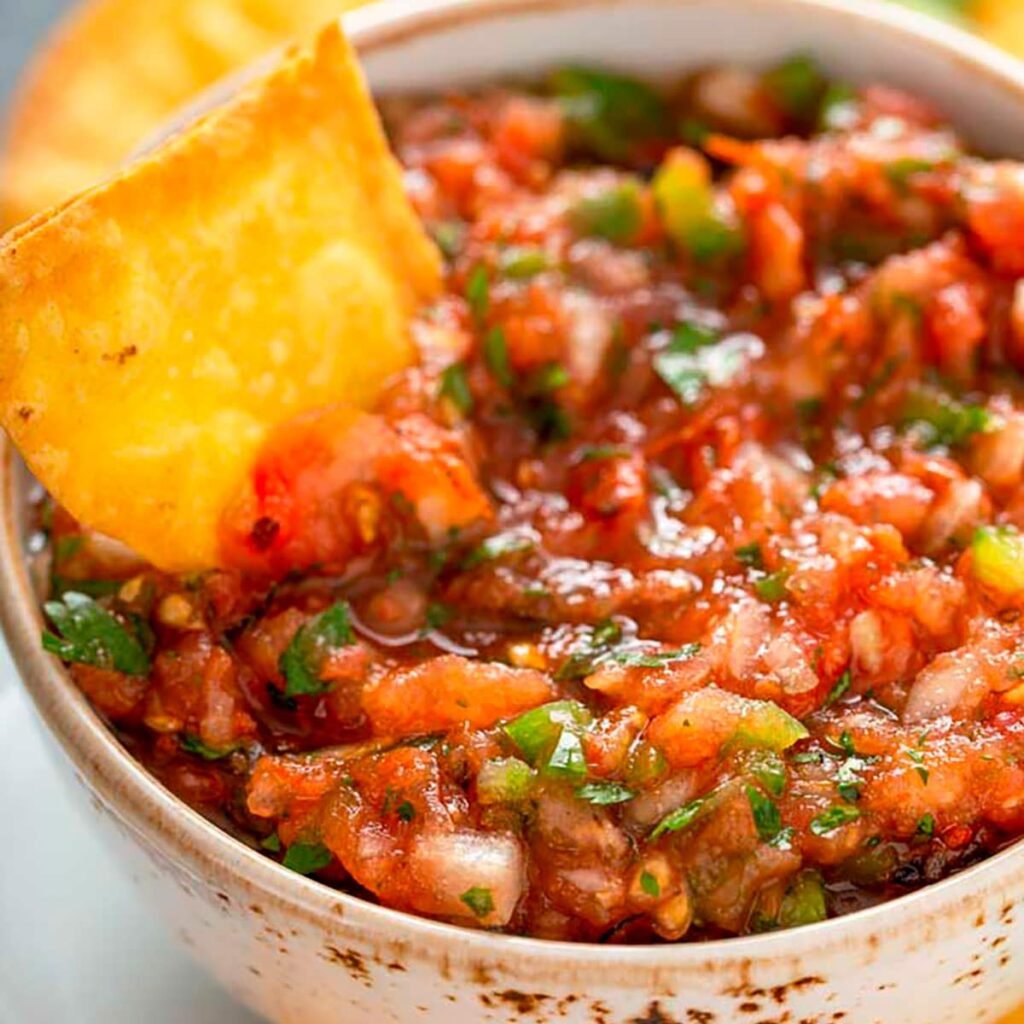
Salsa is a traditional Mexican condiment that has become a staple in many kitchens around the world. This spicy and flavorful sauce can be used as a dip for tortilla chips, a topping for tacos and burritos, or as a marinade for meats and vegetables. In this article, we’ll explore the history of Mexican salsa, the different types of salsa, and how to make it at home. History of Mexican Salsa Salsa has been a part of Mexican cuisine for centuries, with the first recorded salsa recipe dating back to the Aztecs. The Aztecs made their salsa using tomatoes, chili peppers, and ground squash seeds, which they ground together using a stone mortar and pestle. Salsa has since evolved to include a wide variety of ingredients, including onions, garlic, cilantro, lime juice, and a variety of different peppers. Types of Mexican Salsa There are many different types of Mexican salsa, each with its own unique flavor and texture. Here are some of the most popular types: Pico de Gallo: Also known as salsa fresca, pico de gallo is a fresh and chunky salsa made with diced tomatoes, onions, and peppers, along with cilantro and lime juice. This type of salsa is often served as a topping for tacos, burritos, and other Mexican dishes. Salsa Roja: Salsa roja, or red salsa, is a cooked salsa made with tomatoes, onions, garlic, and a variety of different peppers, including chipotle, ancho, and guajillo. This type of salsa is often used as a topping for enchiladas and other Mexican dishes. Salsa Verde: Salsa verde, or green salsa, is made with tomatillos, a type of small green tomato with a tart flavor. This salsa is often used as a dip for tortilla chips or as a topping for tacos and burritos. Chipotle Salsa: Chipotle salsa is made with chipotle peppers, which are smoked and dried jalapeno peppers. This type of salsa has a smoky and spicy flavor and is often used as a marinade for meats and vegetables. How to Make Mexican Salsa Here is a simple recipe for making a classic Mexican salsa: Mexican Salsa Ingredients: Mexican Salsa Instructions: Mexican Salsa Cooking Time The cooking time for Mexican salsa varies depending on the type of salsa being made. Some salsas, like pico de gallo, are made fresh and require no cooking time. Other salsas, like salsa roja, require cooking the ingredients on the stove for at least 15-20 minutes to allow the flavors to meld together. Overall, making salsa is a quick and easy process that can be done in under 30 minutes. Tips for Making Mexican Salsa Here are a few tips for making a delicious Mexican salsa: More Latin American Recipes Follow Us on Instagram
Pozole: A Hearty and Flavorful Mexican Stew
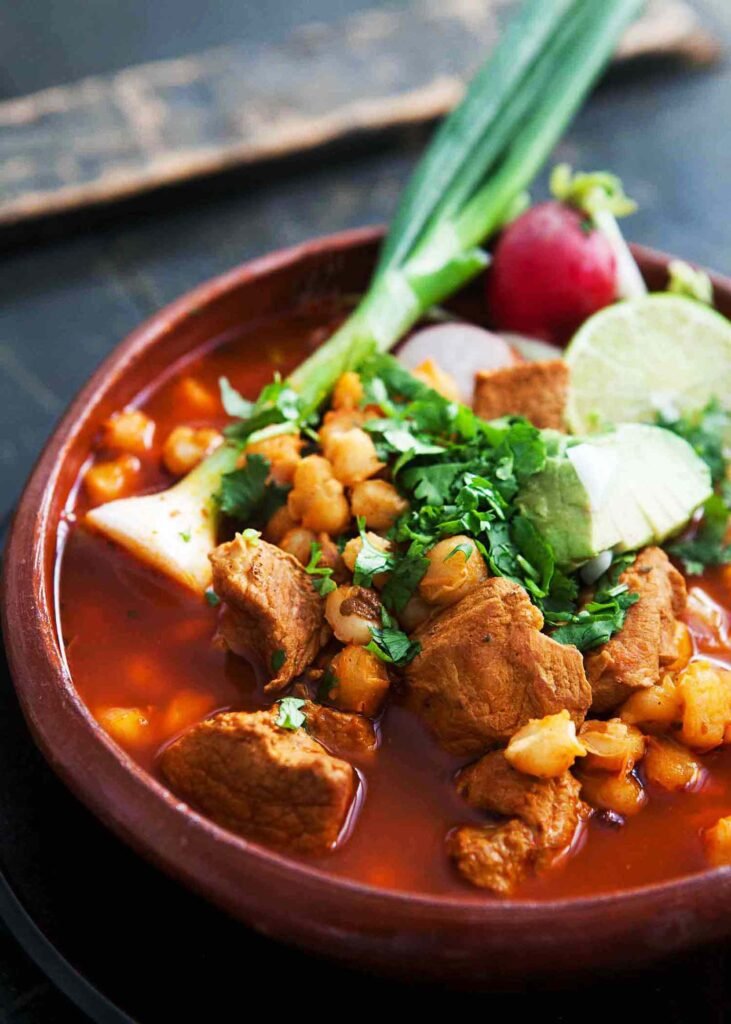
Pozole is a traditional Mexican stew that is perfect for any occasion. This dish is made with hominy, a type of corn that has been dried, treated with an alkali, and then cooked until it is soft and fluffy. The hominy is then combined with meat, spices, and other ingredients to create a hearty and flavorful dish. In this blog post, we will explore the history of pozole, the different types of pozole, and the steps to make this classic Mexican dish. The History of Pozole Pozole has a long and fascinating history that can be traced back to the Aztec empire. According to legend, the Aztecs believed that humans were created from corn, and so they would honor their gods with a dish made from hominy. This dish was called “pozolli,” and it was often served during special occasions and celebrations. Over time, pozolli evolved into pozole, and it became a popular dish throughout Mexico. Today, there are many variations of pozole, and the recipe can vary from region to region. Types of Pozole There are three main types of pozole: blanco, verde, and rojo. Here’s a brief overview of each type: Pozole Recipe Here is a recipe for traditional Pozole Rojo: Pozole Ingredients: Pozole Instructions: Conclusion Pozole is a delicious and hearty Mexican stew that has been enjoyed for centuries. This dish has a rich history that dates back to the Aztecs, and it has evolved into many different variations over time. Whether you prefer pozole blanco, verde, or rojo, this dish is sure to satisfy your taste buds and warm you up on a cold day. While it may take some time to prepare, the end result is a delicious and flavorful stew that is perfect for any occasion. More Latin American Recipes Follow Us on Instagram
Enchiladas: A Classic Mexican Dish
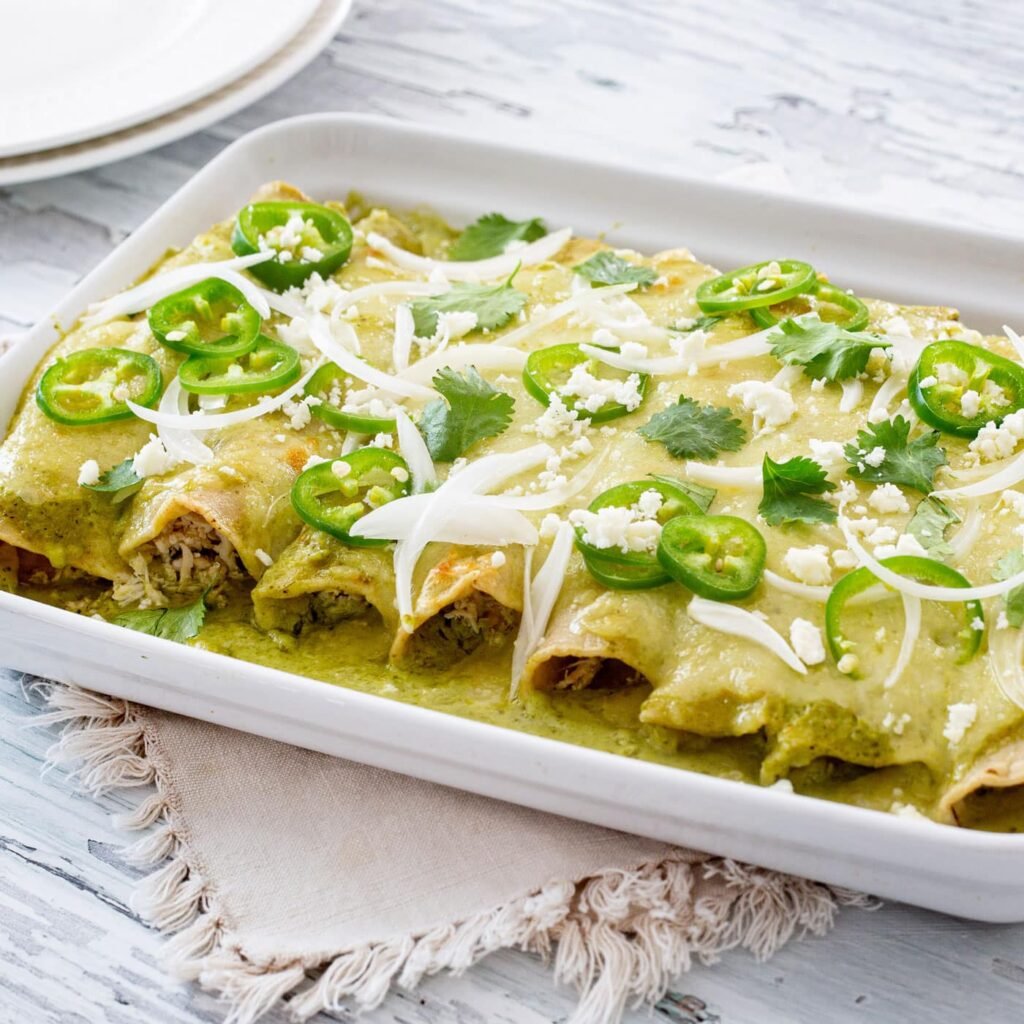
Enchiladas are a classic Mexican dish that are enjoyed by many people around the world. They consist of tortillas filled with a variety of ingredients, such as chicken, beef, cheese, or vegetables, and then covered with a sauce made from chili peppers, tomatoes, and spices. In this blog post, we will explore the history of enchiladas, the different types of enchiladas, and the steps to make this delicious and satisfying dish. The History of Enchiladas The history of enchiladas can be traced back to Mexico over 100 years ago. The word “enchilada” means “in chili” in Spanish, which refers to the chili pepper sauce that is used to cover the tortillas. In Mexico, enchiladas are typically made with corn tortillas that are filled with meat, cheese, or vegetables, and then covered with a chili pepper sauce. Enchiladas are a popular food in many parts of Mexico, and they are often served with rice, beans, and other traditional Mexican dishes. Types of Enchiladas There are many different types of enchiladas, and the ingredients and preparation methods can vary depending on the region of Mexico where they are made. Here are a few of the most common types of enchiladas: Enchilada Recipe Here is a recipe for classic chicken enchiladas: Enchilada Ingredients: Enchilada Instructions: Enchilada Cooking Time Making enchiladas can take some time, as there are several steps involved. The most time-consuming part of making enchiladas is preparing the ingredients, such as cooking and shredding the chicken and making the sauce. Once the ingredients are prepared, it takes about 30 minutes. More Latin American Recipes Follow Us on Instagram
Guacamole: A Creamy and Nutritious Mexican Dip
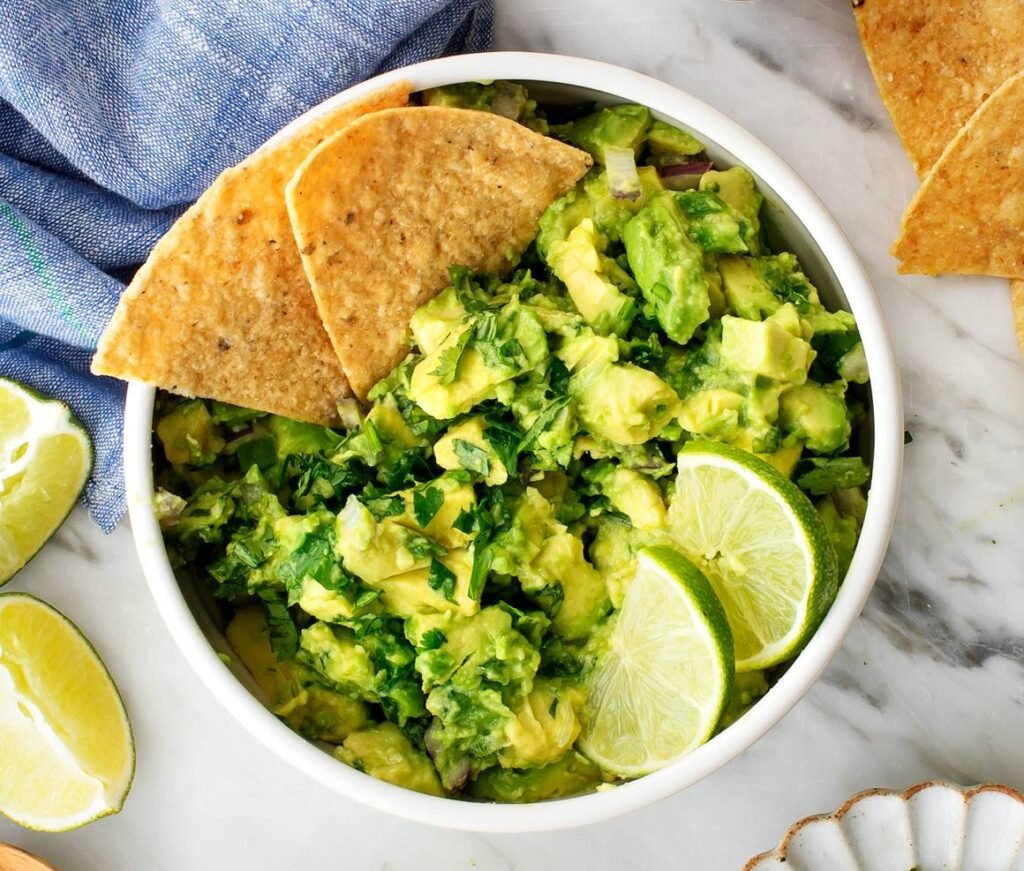
Guacamole is a popular Mexican dip made from mashed avocado, lime juice, onions, tomatoes, and spices. It is a delicious and healthy addition to any party or gathering, and can also be used as a spread for sandwiches or burgers. In this blog post, we will explore the history of guacamole, its ingredients, and the different ways to make it. The History of Guacamole The history of guacamole can be traced back to the Aztecs, who lived in Mexico over 500 years ago. The Aztecs made a similar dish to guacamole called “ahuacamolli,” which was made from mashed avocados, chili peppers, and tomatoes. The word “guacamole” is derived from the Aztec word “ahuacatl,” which means avocado, and “mulli,” which means sauce. Guacamole became popular in the United States in the 1940s, and it has since become a beloved food in many parts of the world. Guacamole Ingredients Guacamole is made with just a few simple ingredients, and the quality of those ingredients can greatly affect the final flavor of the dip. Here are the main ingredients in guacamole: Guacamole Recipe Here is a recipe for classic guacamole: Guacamole Ingredients: Guacamole Instructions: Guacamole Cooking Time Making guacamole is a quick and easy process that takes only a few minutes. The most time-consuming part of making guacamole is preparing the ingredients. Once the ingredients are chopped and ready to go, the guacamole can be made in just a few minutes. It is best to make guacamole just before serving, as it can turn brown if left out for too long. Conclusion Guacamole is a delicious and healthy dip that can be enjoyed in many different ways. It is a great way to add flavor and nutrition to your meals, and it is easy to make at home with just a few simple ingredients. Whether you are hosting a party or just want a tasty snack, guacamole is a versatile and tasty option that is sure to please. More Latin American Recipes Follow Us on Instagram
Tacos: The Versatile and Delicious Mexican Dish
Tacos are a staple of Mexican cuisine that have gained popularity worldwide due to their delicious flavor and versatility. A taco consists of a soft or hard tortilla, filled with a variety of ingredients, such as meat, vegetables, cheese, and salsa. They are often enjoyed with a squeeze of lime and a sprinkle of fresh cilantro. In this blog post, we will explore the history of tacos, their ingredients, and the different ways to make them. The History of Tacos The origins of tacos can be traced back to the indigenous people of Mexico, who used corn tortillas to wrap and fill with various ingredients. It is believed that tacos were first mentioned in Spanish literature in the late 18th century, and they became a popular street food in Mexico during the early 20th century. Tacos were introduced to the United States in the 1900s by Mexican immigrants, and they have since become a beloved food in many parts of the world. Taco Ingredients Tacos can be filled with a wide range of ingredients, and the combinations are endless. The most common fillings for tacos include: Taco Recipe Here is a recipe for traditional beef tacos: Taco Ingredients: Taco Instructions: Tacos Cooking Time Tacos are a quick and easy meal to make, and can be ready in as little as 20 minutes. The preparation time will vary depending on the ingredients used and the cooking method. For example, if you are using a slow cooker to cook your meat, it may take several hours to cook. However, if you are using pre-cooked meat, such as shredded chicken or beef, the tacos can be ready in just a few minutes. Conclusion Tacos are a delicious and versatile dish that can be enjoyed in many different ways. More Latin American Recipes Follow Us on Instagram
Healthy and Delicious Sweet Potato and Black Bean Enchiladas Recipe: A Perfect Vegetarian Meal
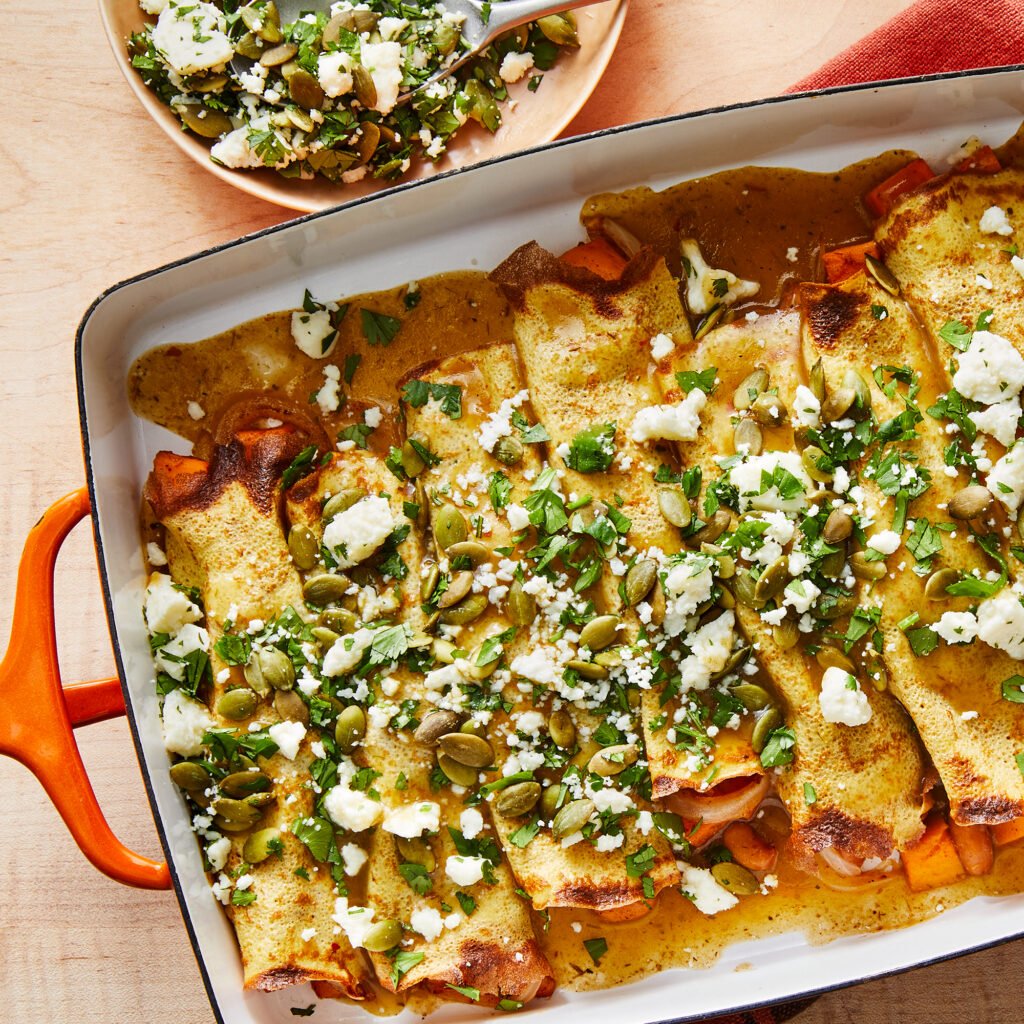
Sweet potato and black bean enchiladas are a delicious and healthy meal that is perfect for any occasion. Packed with flavor and nutrients, these enchiladas are a great way to enjoy a comforting and satisfying meal that is also good for you. In this blog post, we’ll explore the history of this dish, the benefits of the ingredients, and provide a step-by-step recipe to make your own sweet potato and black bean enchiladas. History of Sweet Potato and Black Bean Enchiladas Enchiladas Are a traditional Mexican dish that dates back to the Mayan civilization. The word enchilada means “in chile” in Spanish, and it refers to a dish made with tortillas that are stuffed with various ingredients and then smothered in a chili sauce. Sweet potato and black bean enchiladas are a modern twist on this classic dish, and they have become a popular vegetarian and vegan option in many Mexican restaurants. Benefits of Sweet Potatoes and Black Beans Sweet potatoes are a great source of dietary fiber, vitamin A, vitamin C, and potassium. They are also a good source of complex carbohydrates, which provide long-lasting energy and help to stabilize blood sugar levels. Black beans are an excellent source of plant-based protein and are also high in dietary fiber, iron, and folate. They are also low in fat and have been linked to a reduced risk of heart disease. Recipe for Sweet Potato and Black Bean Enchiladas Sweet Potato and Black Bean Enchiladas Ingredients Sweet Potato and Black Bean Enchiladas Instructions Cooking time for sweet potato and black bean enchiladas Approximately 45 minutes, and the recipe serves 4-6 people. This recipe can also be made ahead of time and stored in the refrigerator or freezer for later. To reheat, simply cover with aluminum foil and bake in the oven until warmed through. In conclusion, sweet potato and black bean enchiladas are a delicious and healthy meal. More Veggie Recipes Follow Us on Instagram
Argentinian Empanadas: A Delicious and Portable Snack
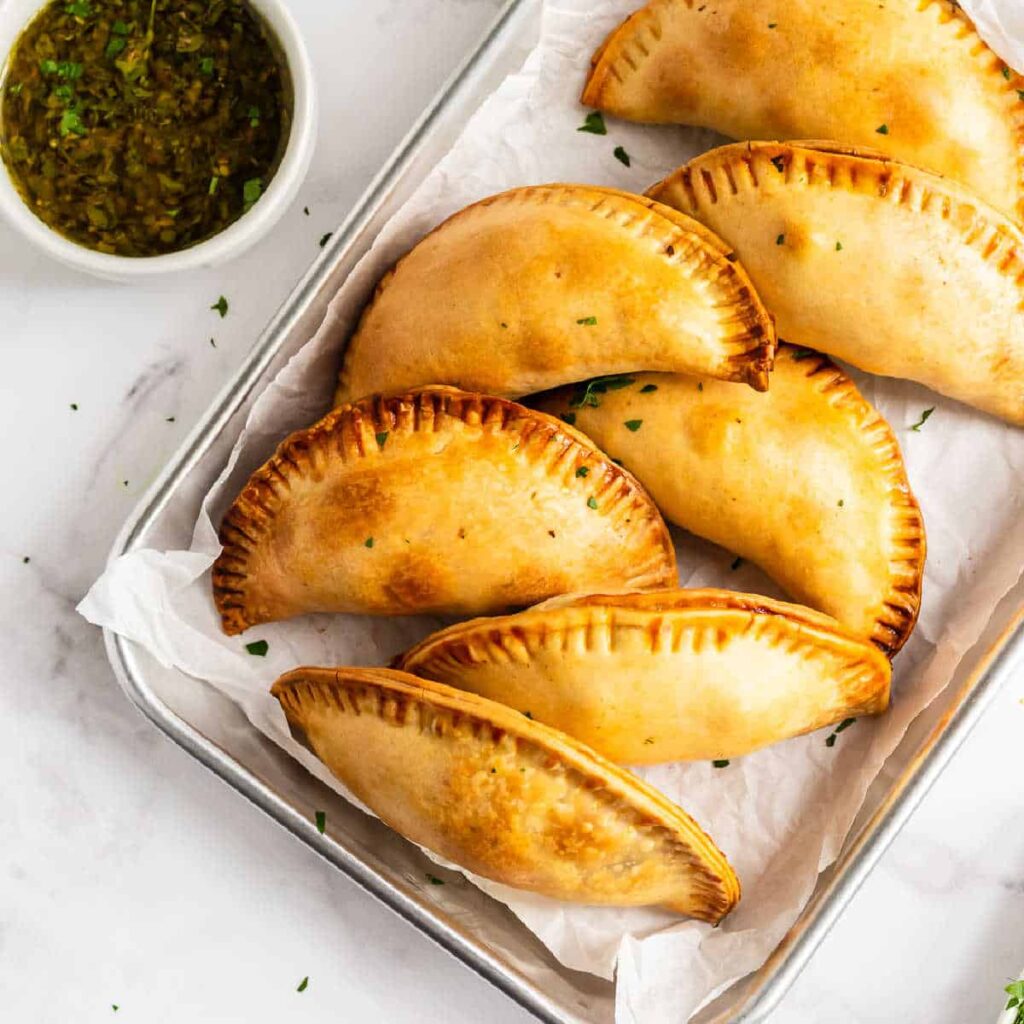
Empanadas are a popular snack throughout Latin America, and in Argentina, they are a staple of everyday life. These savory pastries are made with a variety of fillings, including beef, chicken, cheese, and vegetables, and are enjoyed as a quick and easy meal on the go or as a party appetizer. In this post, we’ll dive into the history of empanadas, the most popular fillings in Argentina, and a recipe you can make at home. A Brief History of Empanadas The word “empanada” comes from the Spanish verb “empanar,” which means “to wrap in bread.” While the origins of empanadas are uncertain, it’s believed that they were first created in Spain during the time of the Moors. From there, empanadas spread throughout Latin America, and each country has its own version and unique fillings. In Argentina, empanadas are believed to have been introduced by Spanish settlers in the 16th century. Over time, they have become a beloved part of Argentinian cuisine, with different regions and families having their own preferred fillings and cooking methods. Popular Empanada Fillings in Argentina In Argentina, empanadas are often filled with ground beef or chicken, seasoned with a mix of spices that typically includes cumin, paprika, and chili flakes. Cheese, onions, and hard-boiled eggs are common additions to the filling, as well as olives, raisins, and other fruits. Vegetarian and vegan options are also popular in Argentina, with fillings that feature spinach, cheese, or squash, and can be a great way to enjoy empanadas if you don’t eat meat. How to Make Argentinian Empanadas at Home While you can find empanadas at most Argentinian restaurants and bakeries, making them at home can be a fun and rewarding experience. Here’s a recipe for Argentinian-style empanadas that you can try at home: Argentinian Empanadas Ingredients Argentinian Empanadas Instructions More Asian Recipes
Pupusas 101: A Guide to Making the Authentic Salvadoran Delight
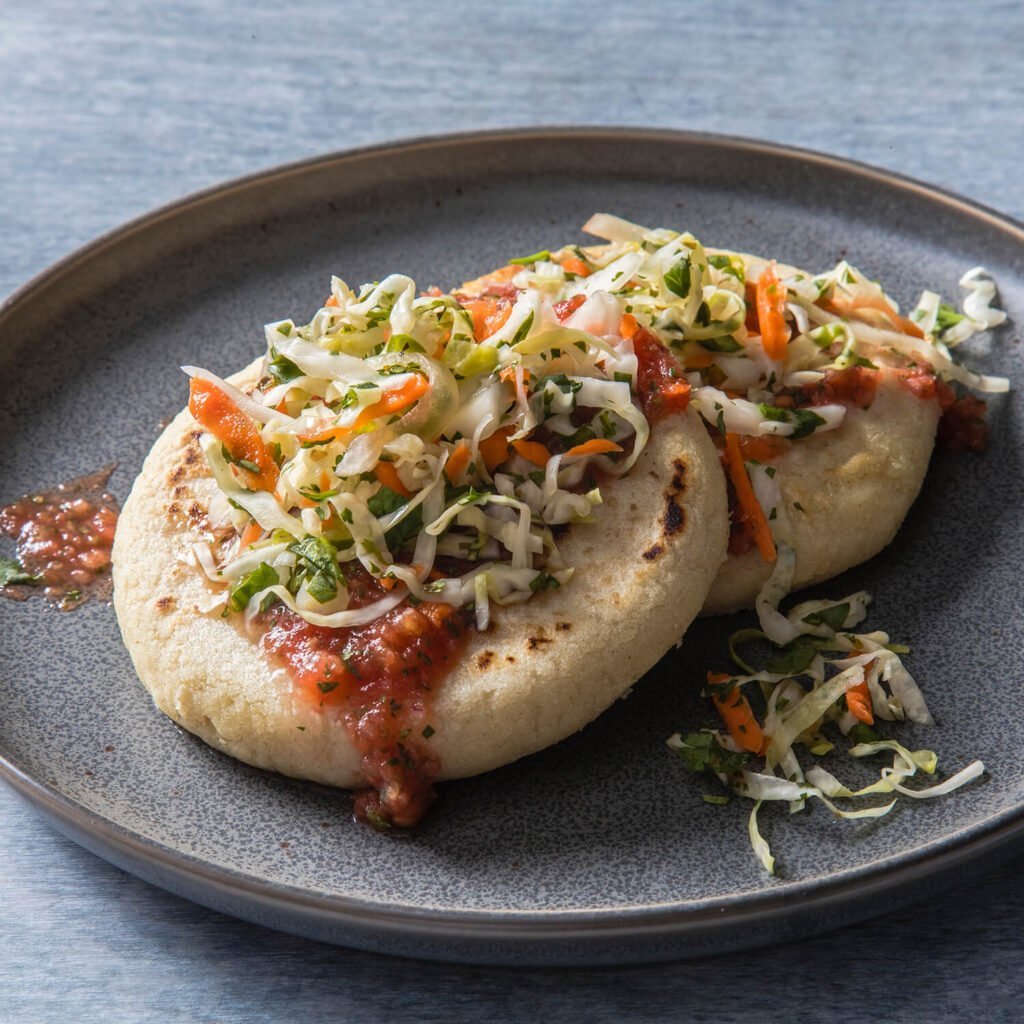
Pupusas recipe are a traditional Salvadoran dish that are loved all over Central America. These delicious and filling snacks are made from a masa dough that is filled with a variety of ingredients, such as cheese, meat, or beans, and then cooked on a griddle until crispy and golden brown. Pupusas are typically served with a tangy cabbage slaw called curtido and a spicy tomato salsa, and are perfect for any time of day. History of Pupusas Pupusas have a long and rich history that is tied to the indigenous people of El Salvador. The word “pupusa” is thought to come from the Nahuatl word “pupushahuatl,” which means “stuffed food.” The indigenous people of El Salvador used masa dough to make tamales and other snacks, but it wasn’t until the Spanish introduced cheese and other ingredients to the region that the modern-day pupusa was born. Pupusas have been a staple of Salvadoran cuisine for centuries, and are now enjoyed all over Central America and beyond. In 2005, the government of El Salvador declared the pupusa to be the country’s national dish. Recipe for Pupusas To make pupusas at home, you will need the following ingredients Pupusas Instructions Cooking Time for Pupusas The total cooking time for pupusas is about 15-20 minutes, including time for preparing the dough and filling, and cooking the pupusas on the griddle. However, the exact cooking time may vary depending on the heat of your griddle and the size of your pupusas. Tips for Making Perfect Pupusas Conclusion Pupusas are a delicious and filling snack that are beloved in Central America and beyond. With this recipe and tips, you can create your own perfect pupusas at home. Whether you’re looking for a quick snack or a full meal, pupusas are sure to satisfy your cravings and transport you to the vibrant and colorful world of Salvadoran cuisine. More Latin American Recipes
